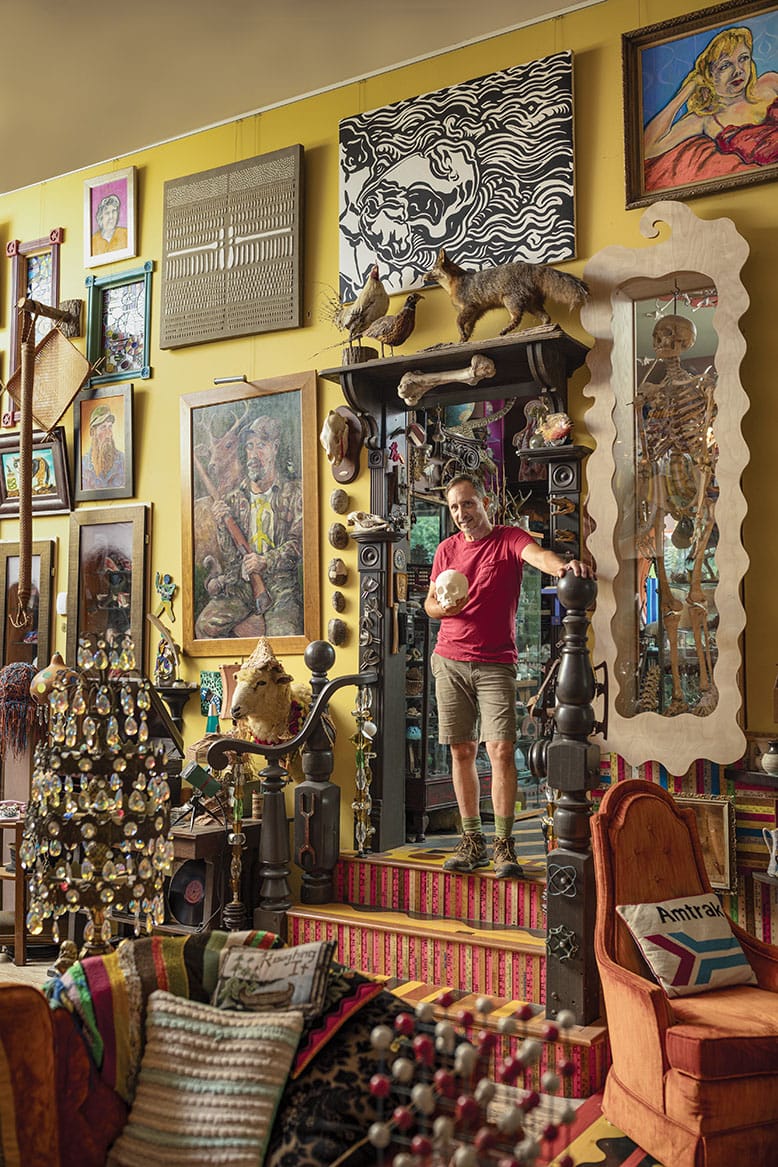
Artist Ricky Boscarino lives and works at Luna Parc. Photo: John Bessler
Ricky Boscarino’s home is the playhouse we all wanted as children—at least, on the outside.
It’s Antoni Gaudi on acid, all bright colors and whimsy, mosaics and carved wooden gingerbread, curved walls and a fence made entirely of crutches, and an entrance that resembles an artichoke—altogether, a haphazard assemblage of whimsy 35 years in the making.
But what’s inside might frighten a youngster. There are about a dozen mannequins, including an Eagle Scout, a soldier in a Soviet officer’s uniform, and a bride dressed in Boscarino’s mother’s wedding gown, which hovers 11 feet off the floor in a corner of the ballroom. Not to mention the taxidermy.
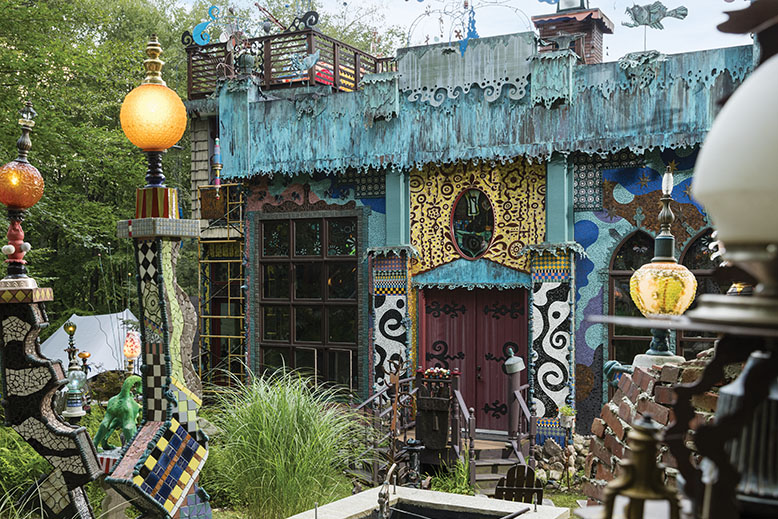
An explosion of color, materials and textures can be seen on Luna Parc’s exterior. Photo: John Bessler
Artists’ homes usually provide a hint about their work. But for 64-year-old Boscarino, the 15-room house, which he calls Luna Parc after an amusement park outside of Rome, is his work.
Luna Parc, located in Sandyston, a rural hamlet in the northwest corner of New Jersey, is a repository of quirky collections and a showcase for Boscarino’s mosaics and sculptures. Its roots go back to his childhood in Piscataway, where he collected rocks, insects and minerals.
“My room became a bit of a spectacle,” says Boscarino. His mother often urged guests to check it out.
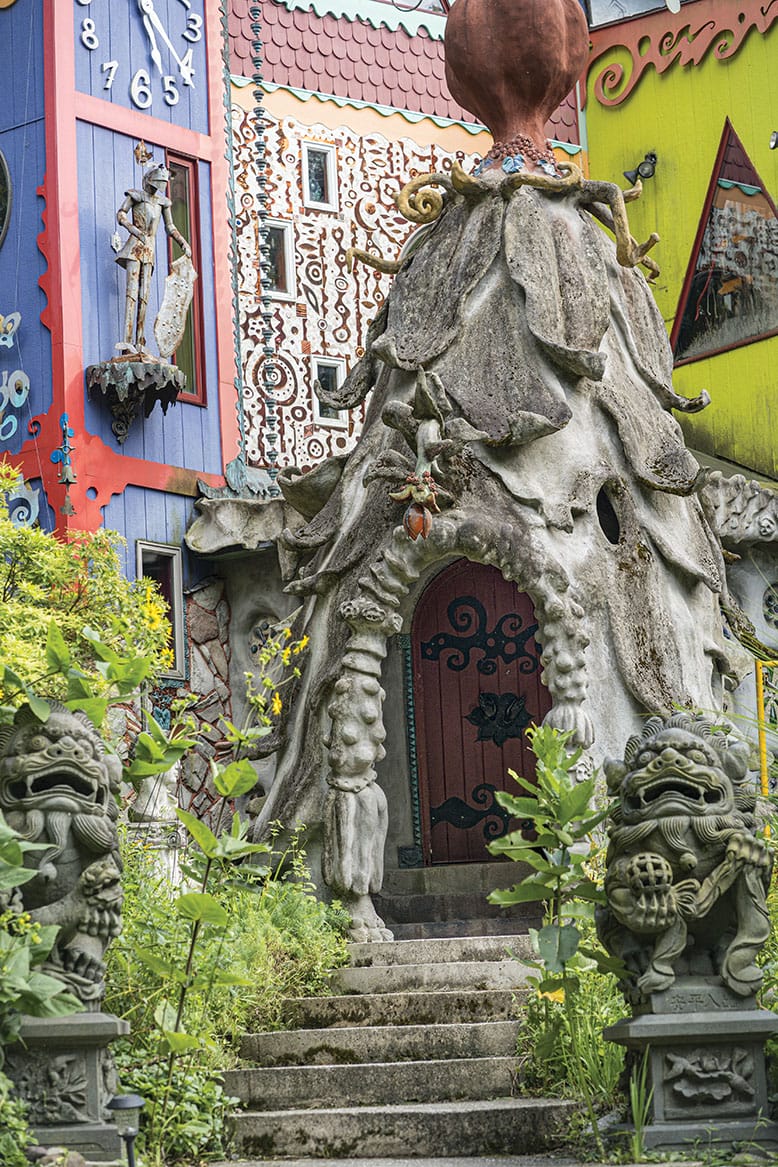
The entrance to Luna Parc resembles an artichoke. Photo: John Bessler
Those childhood finds have grown into a room Boscarino calls the Nature Lab, which features a 200-year-old human skeleton and a taxidermy collection that includes a pearl-necklace-adorned deer and the terrifying head of a Cape Buffalo—“the meanest animal on the planet,” Boscarino points out.
In addition to the Nature Lab, there are the Hall of Hats (where most of the mannequins reside), a Zen room, a library filled with art books, a gift shop, one bedroom, and a single but spectacular bathroom covered with mosaics and festooned with old hospital bedpans. There’s also a crypt, where Boscarino plans to have his ashes interred.
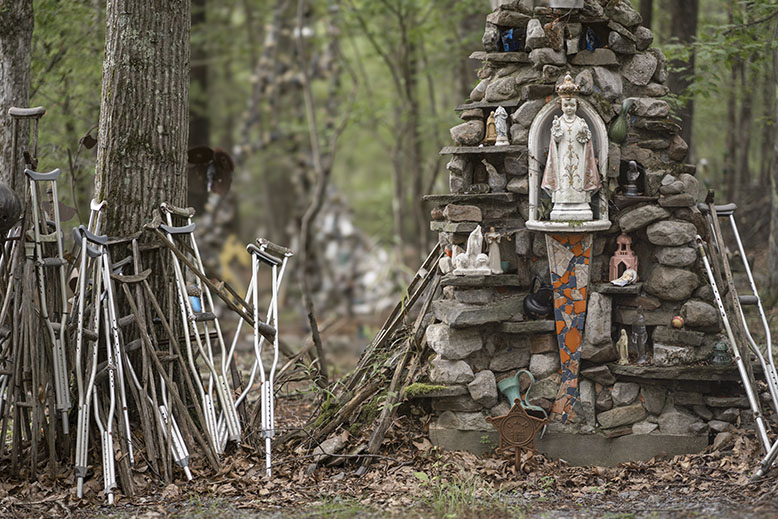
A fence made of crutches. Photo: John Bessler
It was while attending the Rhode Island School of Design that Boscarino discovered camp and kitsch. “That’s when I developed this brain of curating,” Boscarino says. His collections have become exponentially more idiosyncratic: rotary phones, colanders, lava lamps, dentures and dental molds, eye wash cups and glass eyes, to name a few. He’s also a compulsive buyer of outsider art created by self-taught artists.
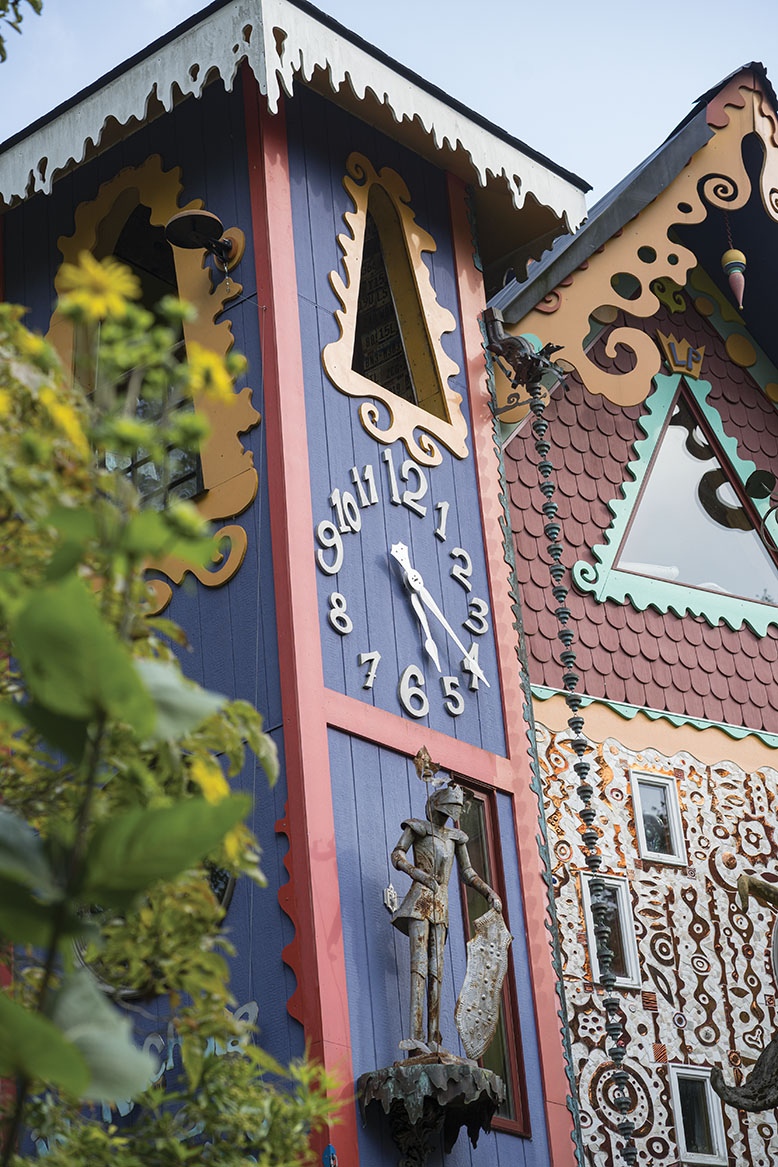
Photo: John Bessler
To support himself, Boscarino is always working relentlessly. He opens his house to visitors at certain times in the spring and the fall, charging admission, and teaches classes in mosaic making and concrete sculpting in the summer (check Luna Parc’s website for a schedule).
He makes and sells silver and bronze jewelry in the shapes of insects, acorns, squid, Fallopian tubes and many other unexpected objects. And he also crafts ceramic face pots, inspired by vessels made by slaves in the 19th century; Boscarino’s depict figures like Amy Winehouse and Frida Kahlo, as well as a wide variety of made-up creatures, some with sadistic grins.
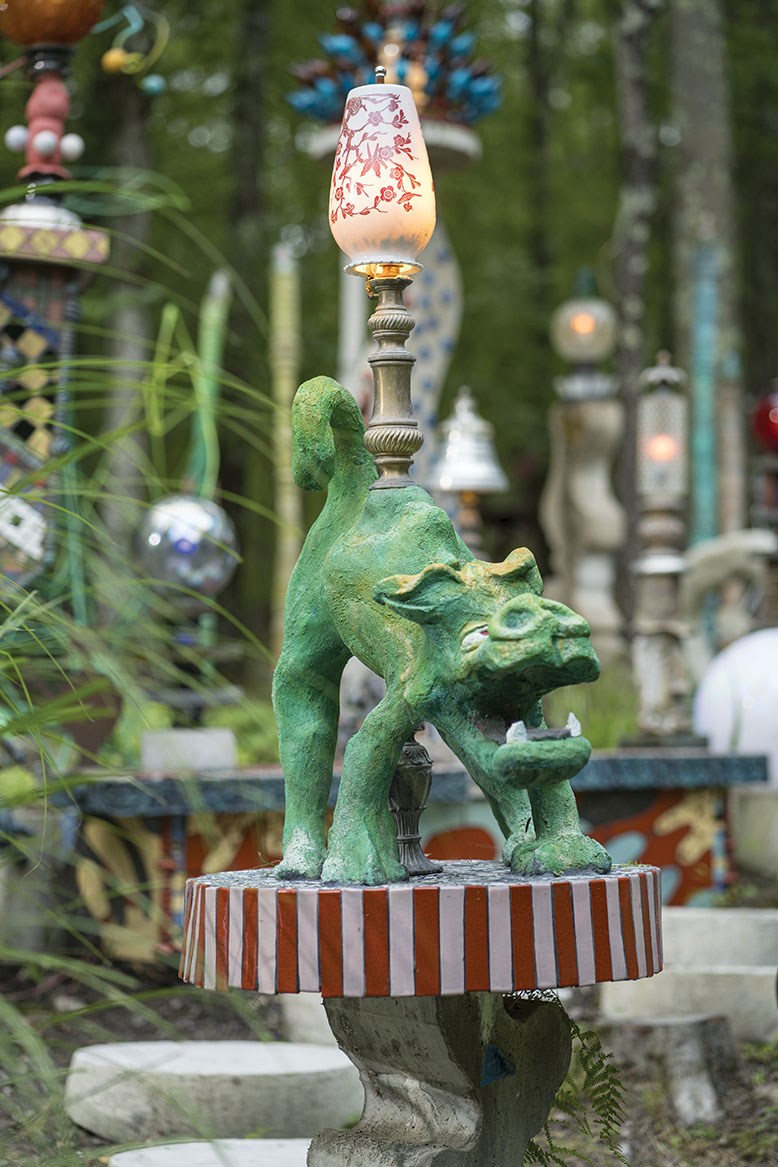
Photo: John Bessler
Lately, and lucratively, he has begun making large wind sculptures for lawns. All this happens when he’s not working on the house itself.
Though Boscarino sometimes calls himself a madcap artist, he’s quite serious about Luna Parc. He’s created a nonprofit foundation that will inherit the house.
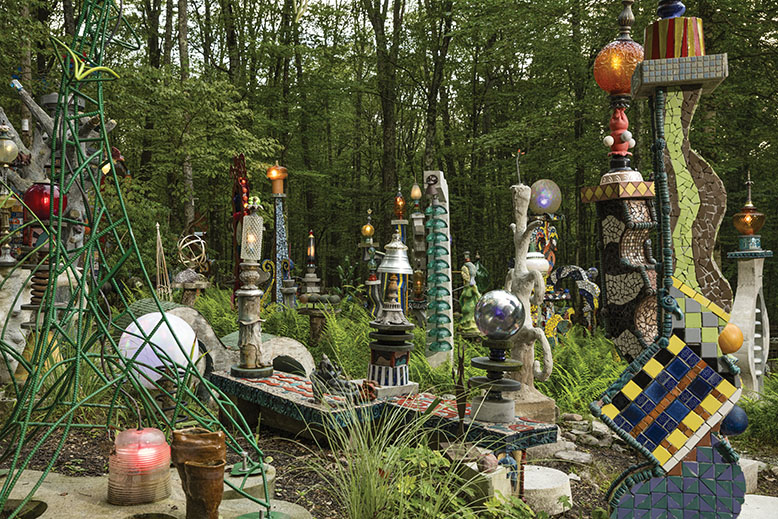
Art is everywhere. Photo: John Bessler
“When I die,” he says, “I want Luna Parc to be up there in the great homes of America,” like Vizcaya, Biltmore and Monticello. Though it’s hard to think of the exuberant Luna Parc in the same category as Thomas Jefferson’s symmetrical, brick, neoclassical manse, it happens to be Boscarino’s favorite American house.
If only Jefferson had seen some John Waters movies.
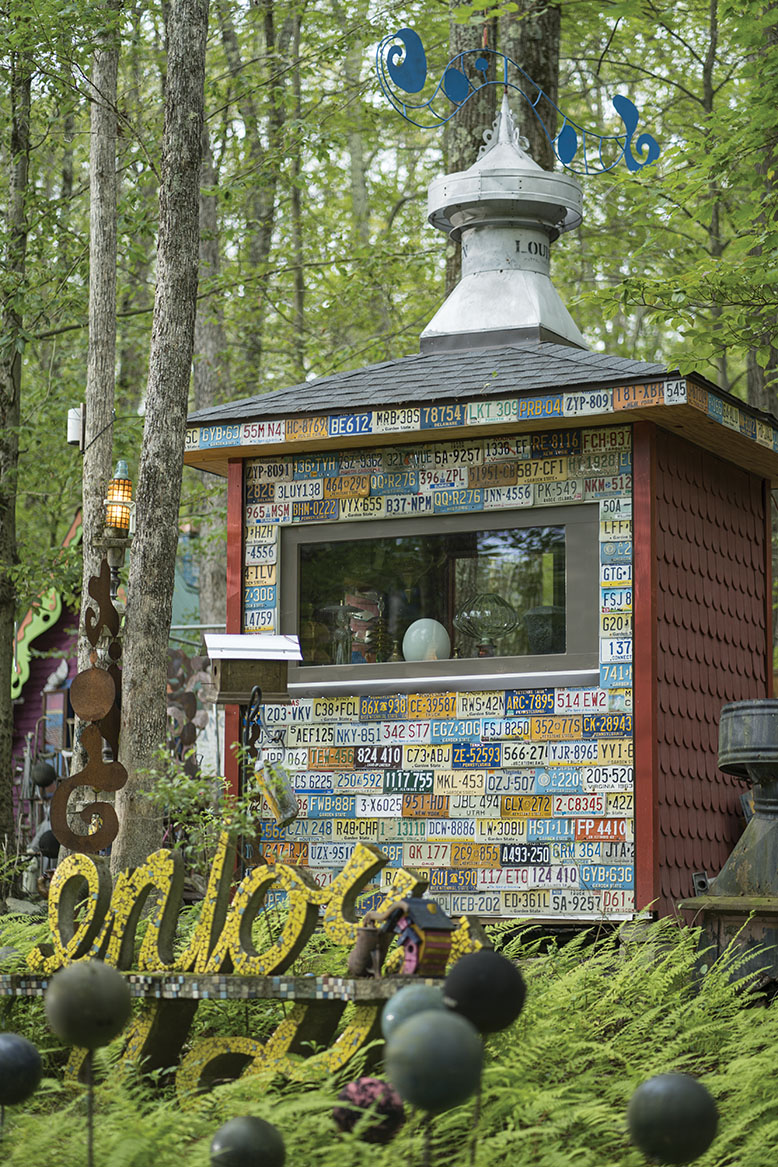
Boscarino works with unconventional items like license plates. Photo: John Bessler
“It’s basically like living in a museum,” Boscarino says of Luna Parc. “I’m very comfortable here. I don’t even notice the mannequins.”
[RELATED: One-of-a-Kind Point Pleasant Home Built Around Century-Old Trolley Car]
No one knows New Jersey like we do. Sign up for one of our free newsletters here. Want a print magazine mailed to you? Purchase an issue from our online store.



